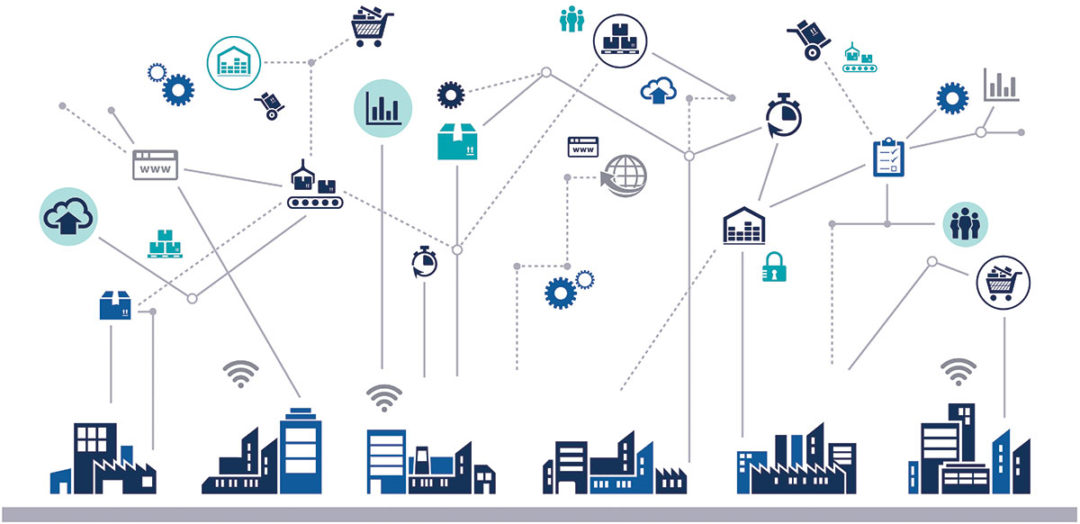In search of industrial space
Warehouses become smarter, more flexible as demand for space heats up.

The coronavirus pandemic has put logistics on the map, as product shortages and rising demand for home delivery continue to highlight the vital role the industry plays in daily life. That elevated profile is also being felt in warehousing, where demand for space is growing, vacancy rates remain low, and investor interest is accelerating, according to real estate experts and third-party logistics service providers (3PLs). Demand for more and better space will challenge the warehousing market well into 2021, these industry observers also say. Among those challenges are the flexibility to deal with the e-commerce boom's wide-ranging effects on the supply chain and a growing need for technology and automation inside the four walls of the warehouse.
"Logistics is continuously growing—something that is not being seen across the other real estate sectors," says Jon Sleeman, lead director of logistics and industrial real estate research in the United Kingdom and Europe for commercial real estate giant Jones Lang LaSalle (JLL). He adds that the heightened focus on the sector is spurring investment and accelerating upgrades in facilities around the world. "Logistics is recognized as a critical part of a country's infrastructure. This pandemic has basically put it on the map."
Carl DeLuca, vice president of real estate for 3PL DHL Supply Chain, agrees.
"Industrial space is in more demand than ever," he says. "The surge will continue this year and into next year."
And it will shine a light on the ways in which warehouse space is evolving to meet changing customer needs. Warehouses that were already becoming smarter and more efficient before the pandemic are ramping up those capabilities to serve burgeoning demand, the experts say. Here's a look at some accelerating warehouse trends as we head into 2021, including potential space shortages, increased use of technology and automation, better supply chain visibility, the flexibility to cope with different scenarios, and network expansions to improve last-mile delivery.
RED-HOT REAL ESTATE
Demand for warehousing started to shift toward the end of this year. The U.S. logistics real estate market rebounded in the third quarter from pandemic-related lows earlier in the year, with warehouse vacancy rates remaining at a low rate of 5% and utilization at 85%, according to a third-quarter report from logistics real estate firm Prologis. Utilization had fallen to 83% in April. Accelerating e-commerce activity and rising inventory levels are at the heart of the trend. The researchers cited growth in both e-commerce–driven leasing and 3PL activity, which they said remained above pre-pandemic averages. Leasing for e-fulfillment purposes reached nearly 37% of new leasing activity in the third quarter compared with a historic average of 21%, they said. What's more, that leasing activity spanned a wider range of businesses: Pure-play e-commerce users of all sizes, brick-and-mortar retailers, and 3PL firms all were active, according to the report. Third-party logistics service providers were also leasing space to help solve inventory challenges.
Looking ahead, the Prologis report predicts that rebounding activity and a shrinking supply pipeline could lead to a shortage of available warehouse space next year. As competition for that space heats up, companies will be focused on securing the right space in the right location to meet demand. They will also be looking for advanced technology and flexibility from warehousing and logistics service providers.
"We're seeing more technology in the warehouse—more robots and more along the lines of the IoT [internet of things] and the smart warehouse. That's a big part of the story," says JLL's Sleeman, emphasizing the importance of technology for improving efficiency and flexibility in the warehouse—especially for e-commerce–related picking and packing operations.
MORE TECH, PLEASE
Demand for warehouse technology and automation was already growing before the pandemic, and like the growth seen in e-commerce, it has only accelerated in the past nine months.
"We're spending a lot of time on technology," says DHL Supply Chain's DeLuca, pointing to a proliferation of inventory management systems, mechanization, wearables, robotics, and the like in today's warehouses. "That's important. There is a technology push inside the box."
DeLuca's colleague Kraig Foreman, president of e-commerce for DHL Supply Chain, agrees that technology investments can help companies meet the unique pandemic-driven challenges of 2020. He points to collaborative robotics as an example.
"Collaborative robotics can boost productivity and increase picking speed, helping to meet the increased need for responsiveness driven by the compressed order-to-delivery expectations of e-commerce customers," he explains, adding that collaborative robots can also help warehouses and DCs handle volume surges without commensurate increases in labor. "They can also be added in temporarily and/or moved around between different sites depending on demand fluctuations, providing the flexibility needed to handle seasonal spikes and unexpected surges in demand."
Collaborative robotics also reduces the need for people to move around a facility, which can help workplaces comply with social distancing requirements. In addition, Foreman says collaborative robots like DHL's LocusBots reduce onboarding times for new hires by up to 70%. The LocusBots—manufactured by robotics vendor Locus Robotics—are autonomous mobile robots (AMRs) that help with piece-picking and order fulfillment throughout the DHL network.
"This is obviously extremely beneficial at a time when you are bringing seasonal labor on board, and it supports productivity," Foreman says.
Technology solutions that improve supply chain visibility are also in demand. Rick Ehrensaft, chief commercial officer for Grand Worldwide Logistics, a division of logistics service provider Odyssey Logistics, says he's seeing growing interest from customers in the company's warehouse management software solution, which gives clients full visibility of their product on its journey through the supply chain. Odyssey and its subsidiaries provide transportation, warehousing, and terminal services, with much of Grand Worldwide Logistics' warehousing tied to rail service. The warehouse management solution allows customers to see their inventory, run reports, and get real-time updates on where stock is, helping them maintain control over inventory and allowing them to make adjustments along the way.
"We're seeing that that's very important now," Ehrensaft explains, adding that the system allows customers with inventory in multiple locations to pivot and move stock around based on market needs. "This used to be a nice [service] we would offer … but today we're seeing people take advantage of it a lot more than they have in the past."
FLEXIBLE SOLUTIONS A MUST
Ehrensaft says Odyssey Logistics is also seeing more requests for flexible warehouse services—primarily when it comes to helping customers manage volume fluctuations. He says the company is fielding a lot more "what if" calls these days as customers try to plan for a variety of scenarios.
DeLuca reports that DHL is dealing with similar requests for flexibility.
"Customers are asking for sites with the flexibility to scale up and down [across] multiple DCs or single DCs," he says. "That will be [something] clients will [continue to] ask for; 3PLs will have to react to that."
At the same time, interest in network expansions is reportedly on the rise. DeLuca and others say companies of all kinds continue to evaluate their supply chains in the wake of the pandemic, with many looking to add nodes to their warehousing and distribution network and get closer to customers for last-mile delivery purposes.
"We see more and more of a focus on getting locations near [consumers] for last-mile [delivery]," says DeLuca. "[Adding] regional DCs is a model that's getting looked at too."
That's because the ability to execute speedy deliveries requires a local distribution presence, and this is leading to growth in major population centers. The Prologis report showed that demand for distribution centers in the third quarter was led by Southern California, New York/New Jersey, Dallas, and Atlanta.
Industry-watchers expect competition for space in major metropolitan areas to continue into 2021.
"Last-mile and urban logistics is definitely a driver of change, particularly around very big cities where space is limited," adds JLL's Sleeman.
Related Articles

Copyright ©2024. All Rights ReservedDesign, CMS, Hosting & Web Development :: ePublishing